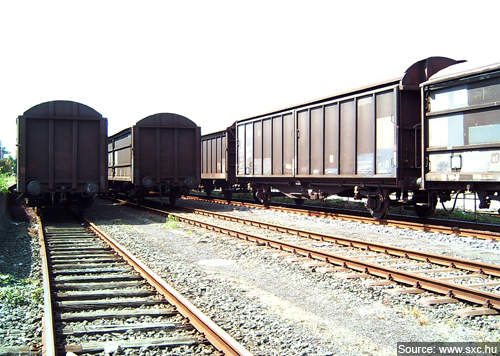The Shah-Habshan-Ruwais Railway Project is a 264km-long rail-line that will begin at the Shah gas fields in the south of UAE to connect with the gas distribution and processing facilities at the port of Ruwais in the north. The rail line will be initially used to transport freight and later passenger services.
The project will be split into two sections. The first section will be the rail-line between Shah gas field and the gas processing and distribution facilities at Habshan in the north. It will be used to transport 10,000t of granulated sulphur a day. The second section will be between Habshan and the port of Ruwais and will be transporting 20,000t of processed sulphur a day. The rail-link will also pass through the cities of Mezaira’a, Madinat Zayed, Tarif and Al Mirfa.
The project is also called the ‘Union Railway’. It was established in 2009 under Federal Law No.2 to develop, construct and operate the UAE’s 1,100km long national railway which will eventually connect to the 2,177km Gulf Cooperation Council (GCC) rail network.
The rail-line will be owned by Union Railway but mostly operated by the client Abu Dhabi National Oil Company (Adnoc).
The project is being fast tracked to make the national rail network operational by 2013-14 to accelerate the development of Western Region, in line with the state’s 2030 vision. The company and its subsidiaries have been working on $10bn gas development programme that will boost the UAE’s sulphur production from 1.7m tons to 7m tons a year by 2015.
While the total cost of the national rail network has been estimated to be $11bn, the construction cost of the Shah-Habshan-Ruwais rail network is yet to be determined.
The entire UAE network is expected to be built on international standards and will take approximately six to seven years to be completed.
The Union Railway has set a target to transport 30m metric tons of freight in the first phase of operation.
Project
The Shah-Habshan-Ruwais project will add 264km of railway track to the originally planned 1,100km nationwide rail network. It is currently undergoing a passenger traffic study.
The Union Railway is also in the process of exploring the possibilities with Adnoc to transport more than 7m tons a year of granulated sulphur. This will help the company in achieving its strategic goal to contribute towards the nation’s development in the oil, natural gas and petrochemical industries.
The project entered the execution phase in June 2010. The Abu Dhabi Freight and Passenger committee invited contractors to bid for the construction contracts.
The pre-qualification documents were made available from July 2010 for AED30,000 to be submitted by 23 August 2010. The tender documents are expected to be issued by November 2010 with submission due in seven to eight weeks.
The winning bidder will have to undertake site preparation, clearance and earth works including the cut and fill work at the Liwa sand dunes.
The contract also includes construction of utilities, access roads, highway diversions, bridges, warehouses, maintenance facilities and tracks work such as supply and installation of ballast, sleepers, rails, switches and crossings.
Rolling stock
The rail tracks will be designed to operate freight and passenger trains at a top speed of 120km/h and 200km/h respectively.
The project will initially have around seven to ten diesel locomotives and 250 covered hopper wagons transporting freight. On completion of the entire UAE rail network, Union Railway plans to increase the fleet to 100 locomotives and 5,000 freight wagons.
Bids have been invited for the delivery of rail cars, which are to be submitted by October 2010. The pre-qualification documents will be made available from 19 September 2010. The procurement process will commence in 2011 and the trains will be test run in 2014.










